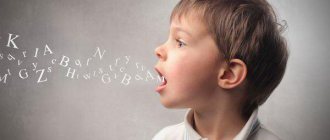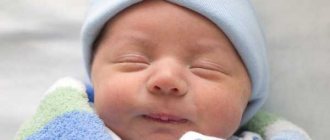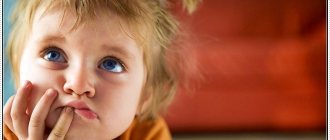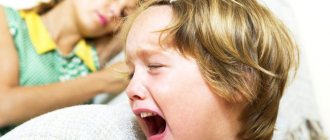Consultation “Art therapeutic technologies
Isotherapy."
Educator: Surikova S.S.
Objectives of isotherapy
- Isotherapy gives children the opportunity to relieve emotional stress and release all negative emotions onto paper or clay. This allows you to avoid aggression on the part of the child, which can further injure him;
- Establish contact between the psychologist and the child and increase his communication skills;
- Isotherapy helps to increase the child’s self-esteem;
- Isotherapy promotes the development of imagination.
Benefits of isotherapy
- Anyone can participate in the work, since it does not require artistic skills.
- Isotherapy is a means of predominantly non-verbal communication, which makes it especially valuable in working with preschool children.
- Visual activity is a powerful means of bringing people together.
- Isotherapy allows you to use the child’s work to assess his condition.
- Isotherapy is a means of free self-expression.
- Isotherapy evokes positive emotions and forms an active life position.
Isotherapy techniques
Marania
This technique consists of spontaneous drawings by preschool children, made in an abstract manner, similar to the drawings of the pre-fine period.
Monotype
This is a basic graphics technique. It is as follows. On a smooth surface - glass, plastic board, film - a drawing is made with gouache paint. A sheet of paper is placed on top and pressed to the surface. The result is a mirror image print.
Hatching, doodles
This technique is a chaotic or rhythmic application of thin lines on the surface of paper, floor, wall, easel, etc. The image is created without paints, using pencils and crayons. This technique helps to stimulate the child, makes him feel the pressure of a pencil or chalk, and relieves tension before drawing.
Drawing with dry leaves and small bulk materials (cereals, sand, etc.).
Using leaves, bulk materials and PVA glue you can create an image. A drawing is applied to a sheet of paper with glue. Then it is sprinkled with dry leaves, rubbed between the palms or loose materials. Excess, unadhered particles are shaken off. The described technique of creating images is suitable for children with severe motor awkwardness, negativism, and tightness; it promotes the process of adaptation to a new space and gives a feeling of success.
Drawing with fingers, palms, and other parts of the body
This is legal mud play in which destructive impulses and actions are expressed in socially acceptable ways.
Card index of art therapeutic exercises for preschool children
Farida Galimova
Card index of art therapeutic exercises for preschool children
Exercise “Drawing yourself”
Goal: Self-disclosure, work with the image of “I”
.
Draw yourself as a plant, animal, schematically. Works are not signed. At the end of the task, all the works are hung on a stand and the participants try to guess which work belongs to whom. They share their feelings and impressions about the work.
Exercise “Scratching”
Goal: develop imagination, fine motor skills, relieve emotional stress.
Graphic work on a soap lining. The work done in this way resembles an engraving, as it is created by a line of different directions in length, smoothness and turns out velvety due to the deepening of the scratching of the surface.
Material: a sheet of paper, prepared in advance (a sheet of paper is first soaped, then covered with gouache, ink or paint, a pen with an asterisk nib.
Graphic work on wax lining. To complete this work, you need a piece of stearin candle, watercolor paints, and ink.
They make a drawing with paints or paint over the sheet with combinations of different tones, depending on what you have in mind. Then carefully wipe with a piece of candle so that the entire surface of the sheet is covered with stearin. After which the entire work (the entire sheet)
. Sometimes twice. Scratch after drying.
Exercise “Salt drawings and toothpaste”
Goal: develop imagination, fine motor skills, relieve emotional stress.
What if you paint with glue and sprinkle salt on top of these areas? Then you will get amazing snow pictures . They will look more impressive if they are done on blue, blue, pink colored paper. Another way to create winter landscapes is to paint with toothpaste. Draw light outlines of trees, houses, and snowdrifts with a pencil. Slowly squeezing out the toothpaste, go over all the outlined contours. Such work must be dried and it is better not to put it in a folder along with other drawings.
Exercise “In the raw”
Goal: develop imagination, fine motor skills, relieve emotional stress.
The drawing then turns out to be raw, when paint is splashed into the not yet dried background and spread out with a swab or a wide brush.
This method of painting helps to get magnificent sunrises and sunsets. Drawing an animal, or rather its coloring, helps to achieve similarity with nature. The object turns out to be fluffy. This method of drawing was very often used in his works by the illustrator Charushin.
Exercise "Spraying"
Goal: develop imagination, fine motor skills, relieve emotional stress.
Material: regular comb, brush or toothbrush, paint.
Using this method of drawing in your work, you can convey the direction of the wind - to do this, you need to try to ensure that the spray falls in the same direction throughout the entire drawing.
Express seasonal changes vividly. So, for example, the leaves on the awn turn yellow and red earlier than on birch or other deciduous trees. They are yellow and green and orange on her. And the method of spraying will help to convey all this diversity.
Exercise "Monotype"
Purpose: Develops creativity and imagination.
Material: cellophane or glass (the size of a sheet of paper, any paints, clean water, paper.
The paint is splashed onto the glass with water and a brush, and splashed onto the glass. Then a sheet of clean paper is applied and pressed with your fingers. Depending on the stains and the direction of rubbing, different images are obtained. You can't get the same image twice.
This method can be used when tinting paper for drawing meadows, landscapes; the background can be one-color or multi-colored.
Exercise “Invisibility. Drawing with a candle"
Goal: develop imagination, fine motor skills, relieve emotional stress.
Material: paper, wax, paraffin candles, watercolors or paints. Gouache is not suitable for this method of drawing, because it does not have shine. You can use mascara.
First, children draw with a candle everything they want to depict on the sheet (or according to the topic)
The sheet produces a magical drawing, it is there and it is not there. Then watercolor is applied to the sheet using the wash method. Depending on what you're painting, watercolor may be combined with ink.
Exercise “Paired drawing”
Time: 10-15 minutes.
Goals: development of self-regulation, arbitrariness of behavior, ability to work according to rules, development of the ability to interact constructively. The technique is carried out in pairs.
Necessary materials: paints, brushes, pencils, crayons, paper, water cups, colored paper, magazines, scissors, glue, felt-tip pens, markers. Work progress: the group is divided into pairs, each pair is given a sheet of paper, a box of paints, pencils. Other materials can be placed on a separate table so that any child can come and get what they may need.
Instructions: “Now we will draw in pairs. Two people draw a single composition or image on one sheet of paper. There is a very important condition: you cannot agree in advance on what kind of drawing it will be, you cannot talk during the work. In addition to paints and pencils, it is allowed to complement the image with colored paper, use ready-made images from magazines, cutting and gluing them in addition to the composition. We start at the signal."
After the drawings are ready, a discussion and exhibition of the works is held. You can choose the most harmonious, the most unusual or the most conflicting work and ask the authors questions about what helped them, how they acted, how they agreed on a non-verbal level what exactly they would draw, etc.
Negative experiences of interaction in the process of paired drawing are also discussed.
Exercise “Spontaneous drawing”
Goal: to provide children with the opportunity to realize their real experiences and react to their feelings towards their teacher.
Progress of the exercise : After reading the fairy tale, the children are asked to draw a picture - whoever wants what. The facilitator helps group members realize their real experiences and reveal their perspectives in the process of discussing the drawings. Children are asked questions for understanding and clarification. What did you draw? What is this? What did you like and dislike about the fairy tale? What place in the fairy tale was most memorable? Was it difficult or easy to draw? Note: the drawings are not interpreted, not compared, and the results of the drawings are not summed up.
Exercise “My Planet”
Goal: develop imagination, fine motor skills, relieve emotional stress.
Instructions: “Close your eyes and imagine a planet in space. What planet? Who inhabits this planet? Is it easy to get to? By what laws do they live on it? what do the residents do? What's your planet's name? Draw this planet"
Children make drawings, after which a discussion of the work is held.
Game "Two with one chalk"
Goal: developing cooperation, establishing a psychological climate in the group.
Equipment: A4 sheet, pencils.
How to play: Divide into pairs and sit at the table next to your partner. Now you are one team that must paint the picture . You are given only one pencil. You must take turns drawing one picture , passing a pencil to each other. There is a rule in this game - you cannot talk while drawing. You have 5 minutes to draw.
Exercise “Drawing on crumpled paper”
Goal: develop imagination, fine motor skills, relieve emotional stress.
Use crumpled paper as a basis for the drawing. Pre-wrinkle it well and get ready for work. In this case, you can draw with paints or pencils (chalk), you can tear off the edges of the drawing, designing it in the form of an oval, circle, etc.
Exercise “Ink Spots and Butterflies”
Goal: develop imagination, fine motor skills, relieve emotional stress.
Drop ink onto thin paper and roll the sheet into a tube or fold it in half, unfold the sheet and transform the image you see. Discuss the results of the work in the group, find the images you liked most from other participants.
Paint Blowing Technique
Goal: develop imagination, fine motor skills, relieve emotional stress.
Apply water-soluble paint with plenty of water to a sheet of paper, use various combinations of colors, at the very end of the work, blow color spots through a thin tube, forming droplets, splashes and mixtures of colors into fancy scribbles and blots; try to see the image and develop it.
Exercise “Drawing with charcoal chalk”
Goal: develop imagination, fine motor skills, relieve emotional stress.
To create an image, use charcoal crayons, taking advantage of all the possibilities of this visual material. Large paper sizes can be used for work. Use charcoal along with colored pencils or wax crayons. Discuss the sensations and feelings that arise during work and its results.
"Doodle" technique
Goal: develop imagination, fine motor skills, relieve emotional stress.
Freely moving a pencil over a piece of paper, draw some doodles without any purpose or intention and pass them on to your partner, who will have to create an image from them and develop it.
Options:
then exchange transformed scribbles with your partner and try to continue the drawing without disturbing what he has drawn, then discuss together your associations associated with each other’s drawings;
after completing the drawing, compose a story based on the scribbles;
express in words your feelings and associations that arose when you perceived your partner’s scribbles;
Using sweeping movements of various parts of the body, create doodles on a large sheet of paper (whatman paper, the back of the wallpaper, you can close your eyes. After completion, find the image in the image and develop it.
Exercise "Rainbow"
Goal: Development of the emotional world. Development of communication skills.
Material: Whatman paper, paints, brushes.
Conduct: Children are told about the sequence of colors of the rainbow. On a large sheet of whatman paper, they each take turns drawing one stripe of the rainbow. When all the children have drawn a strip, the drawing can be decorated with flowers, trees, birds, etc.
Exercise “Group drawing in a circle”
Goal: Development of empathy, friendly attitude towards each other.
Material: Paper, pencils.
picture on a sheet of paper , and then pass the baton to the next participant to continue the drawing. As a result, each drawing returns to its original author. After completing this task, the original concept is discussed. Participants talk about their feelings. Collective drawings can be attached to the wall: a kind of exhibition is created, which for some time will remind the group of collective work in a “foreign space”
.
This technique can cause aggressive feelings and resentment. Therefore, the psychologist should warn the participants to be careful with each other’s work.
Exercise “Drawing to Music”
Goal: Relieving emotional stress.
Materials: Watercolor or gouache paints, wide brushes, paper, audio cassette by Vivaldi “The Seasons”
.
Conduct: Drawing to the music of Vivaldi “The Seasons”
big strokes.
Summer – red strokes (berries)
Autumn – yellow and orange (leaves)
Winter – blue (snow)
Spring – green (leaves)
Exercise “Finger painting”
Goal: develop imagination, communication skills, empathy.
Two or more guys stand opposite each other and take turns “drawing”
There are various objects, animals, cars in the air.
Opponents must guess and name the “drawing”
.
Exercise “Draw your mandala”
Purpose: relieving stress, fatigue, tension or internal conflict.
Using a simple pencil, draw a circle with a diameter corresponding to the size of your head. There should be at least 3 cm left to the edge of the sheet. Find a central point in the circle that would give you a feeling of balance. This will help you achieve a steady state. Think about those natural forms that grow and develop from the center, for example, flowers, snowflakes or sea shells. You are part of nature, and therefore you also have a certain center from which you can grow and develop. Start drawing from this center - your center - depicting a certain figure of one color or another, and let the composition of your drawing build itself, as if without your direct participation. With the help of this drawing, you can learn something new about yourself, and when you finish drawing, you can discuss your mandala with your therapist.
Exercise “Magic colors”
.
Goal: develop imagination, fine motor skills, relieve emotional stress.
Now you and I will create Magical colors. Here is your tray with all the necessary things (flour in cups, gouache, salt, sunflower oil, water, PVA glue.)
Take the flour in your hands and mix it with your hands.
What does it feel like? Give her a piece of your warmth, and she will become warmer. Now add salt and mix everything with your fingers. Now let's add oil. Then add water to make real magic paint. To make our paintings durable , we add PVA glue. Almost everything is ready. All we have to do is give our paint color. Choose a gouache color that you like and add a little to the paint. Well done, you have made real magic paint. These are paints for everyone, let's put them in the center of the table. Now we will try our magic colors and draw a fairyland. Children are offered cardboard of different colors , calm music is turned on, and children draw with their hands.
Finished works are laid out on free places, organizing an exhibition, while the music continues to play. Discussion:
How did you feel while doing the work? How do you feel now?
Exercise “ Map of my inner world”
Goal: formation of ideas about oneself; awareness and expression of one's feelings; emotional rapprochement between child and parents.
Age : children of senior preschool age .
Materials: paper of different formats; paints, brushes;
a set of pencils/markers/crayons; various geographical maps .
Description of the exercise : Show your child various geographical maps .
“There are various geographical maps . As you can see, they can tell us about how the continents, oceans, seas, mountains are located; about the features of nature; about the structure and development of cities; about different peoples. The map reflects everything that people were able to discover and study. Although our Earth was once completely unknown, people knew little about what surrounded them.
But all this is the external world. And there is also a special world. Inner world. Each person has his own - amazing, unique, and somewhere unknown.
So let's create maps of our inner world. They will be similar to the cards that we looked at today, only all the names on them will be special. For example, "ocean of love"
, or
"mountain of courage"
. Let us first designate what we have already discovered in ourselves, we know. And let’s leave room for our further discoveries.”
When the maps are ready, give them “tours”
for each other.
When viewing, pay attention:
- what prevails on your cards : what feelings, states, colors;
- what “route”
progress on
the map , where the journey began and where it ended;
— which areas were left for further discoveries; what discoveries would you like to make;
- ask your child what was most difficult for him to portray, and also share your difficulties, if any.
— at the end of the excursion, ask if everything turned out as planned? Would you like to change something? What did you like most about your card and the other's card ? How are your cards similar and how are they different?
Note: Try to continue working with the cards in the following days. Let them remain visible for this purpose, so that something can always be added or changed. conduct “excursions” again
for each other and pay attention to what has changed in the perception
of the card .
Exercise “Envelopes of joy and sorrow”
Goals: development of skills to openly express one’s feelings in relation to various life situations, relieve tension, emotional rapprochement between the child and parents.
Age : senior preschool ;
Materials: postal envelopes, paper of various sizes; colored/white cardboard ; paints, a set of pencils/markers/crayons; scissors, glue.
Description of the exercise :
“In a whole day, a lot of different events happen - some amuse us, some surprise us, some make us happy, and some sadden us. Let's make envelopes in which we can collect everything we remember during the day. In one of them we will collect our joys, and in the other we will hide our sorrows.”
Now invite your child to make envelopes. To do this, you can use ordinary mailing envelopes (which you can then paint, make some kind of applique on them, or make them yourself. To do this, you can come up with your own shape, choose the material itself (album sheets, white/colored cardboard , foil, etc.) d.)
When the envelope of joy and the envelope of sorrow are ready, start filling them out.
Take small pieces of paper and ask your child to write on them or draw what made him happy and what made him sad. And distribute it into the appropriate envelopes.
Then invite him to use his hands to depict scales.
Let him put one envelope on his right palm and the other on his left. How much does he think he outweighs? Joy? Great, tell me that tomorrow, when we fill out our envelopes again, there will probably be even more of it! Are the disappointments outweighed? Say that, of course, this is sad. But we put them in an envelope, they are no longer in you - but in this envelope. This means they have lost power over you. And tomorrow we will continue to fill out our envelopes again, and we’ll see who wins!
While filling out the envelopes, you and your child can periodically review their contents, discuss something, remove or add something. Let the child decide for himself how long he will “lead”
such envelopes.
When he wants to stop, conduct a “full audit”
of the content.
Then offer to store the envelope with accumulated joys in a safe place, so that you can always review it if you suddenly feel sad. But offer to “deal with”
. Let the child come up with a way for grief to disappear from his life forever (for example, the envelope can be torn and trampled on; you can cut it, or put it in water and wait until it gets wet, etc.)
Note: It’s good when everything that the child puts in envelopes is discussed with the parents. This gives parents an additional opportunity to get to know their child better, to be aware of what worries him at the moment; But it also happens that a child refuses to write or draw something that upset him. to “declassify” something
. Don't insist. This means he is not ready for this yet. Reassure him, tell him that you don’t have to show this. Or invite him, instead of writing or drawing sorrows, to say them in a whisper into the envelope itself. And you turn away or leave the room for a short time. It is more likely that later the child himself will want to share with you what he hid in the envelope.
Exercise "Flower"
Goal: develop imagination, fine motor skills, relieve emotional stress.
Materials: paper, brushes, paints, pencils, felt-tip pens.
Close your eyes and imagine a beautiful flower. What does he look like? What does it smell like? Where does it grow? What surrounds him? Now open your eyes and try to picture everything you imagined. What is your flower's mood? Let's make up a story about him.
Notes: it is important to finish the exercise in a positive mood; if the child has composed a sad story or his flower is in a bad mood, then you can suggest changing the drawing or story so that the mood becomes good.
Isotherapy exercises
Exercise “Let's pretend to be happy”
The purpose of the exercise is to improve the emotional background with the help of color and concentration on your feelings.
Material used: paper. watercolor paints, brushes.
Description of the exercise: To work, you need to sit down, relax, close your eyes and imagine the most joyful moments of your life, feel all the sensations. After this, you should imagine your feelings in the form of flowers and figures. There is no need to stress, only emotions and sensations are important here. It is enough to stay in this state for 10–15 minutes. After this, the images you see can be transferred to paper.
Exercise “Drawing music”
The purpose of the exercise is to restore strength, relaxation, and calmness.
Materials used: Calm melody, sheets of paper, watercolor, brush.
Description of the exercise: At the beginning of the lesson (the first 10 minutes), you need to close your eyes and immerse yourself in the music. Then you can take a brush and paint. In the process of work, the hand should spontaneously follow the music. When performing the exercise, you need to focus on your feelings and the pictures that appear before your eyes. The result is a bright positive mood, a surge of strength, and a release of tension.








